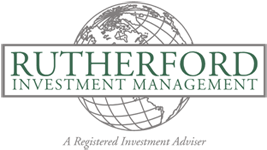Published May 7, 2021

The strong gains seem to provide evidence that the economy is poised for rapid recovery following last year’s pandemic-caused recession. Economists now expect a rebound because of strong consumer spending, trillions of dollars of government support, a surge in pent-up demand and increased mobility due to vaccinations.
The government reported last week that the overall economy, as measured by gross domestic product, rose at a robust rate of 6.4 percent in the January-to-March quarter. Some economists believe that growth will be strong in the coming quarter, perhaps even topping 10 percent.
U.S. consumer spending grew at the fastest pace in nine months, reflecting billions of dollars of government support payments. Incomes surged a record-breaking 21.1 percent in March, after falling 7 percent in February when frigid winter weather disrupted sales. The surge came amid billions of dollars in relief payments from a nearly $2 trillion federal government support package.
Despite the spending increases, consumers squirreled away a lot of their incomes – the savings rate grew to 27.6 percent in March, from an already elevated 13.9 percent in February. Excess household savings now totals about $2.3 trillion over what economists estimate would have been the case without the pandemic. Analysts believe that consumers will spend this stockpile in coming months as vaccinations get them to return to stores and take long-awaited vacations.
Inflation appeared to be tame, rising 1.8 percent annualized, excluding volatile food and energy prices. Meanwhile the Federal Reserve has kept its key interest rate at a record low of 0 percent to 0.25 percent and pledged to carry that rate into next year.
With all of these tailwinds, the question on many investors’ minds is what to do next in an apparent Goldilocks economy. Should an investor punt? Become defensive? Or ride the wave?
Punting would mean taking one’s chips off of the table. However, history demonstrates that it has been better to be invested over time than not. Besides, where would you put your money?
Do other assets provide better opportunities than equities? Certainly neither bonds nor cash with returns at very low levels. Commodities? The prices of corn and lumber are at record highs, but these are difficult markets in which to participate for the average investor. Precious metals such as gold and silver are inflation hedges, but are they good investments? Base metals such as copper are possibilities, if the economy stays strong, but they are volatile and hard to predict. Real estate? Commercial lease rates and apartment rents are plummeting in many locations.
Or is it better to not fight the tape and stay invested? Leavening your portfolio and titling toward defensive holdings might be OK, but not a full “playing not to lose” strategy. An investor cannot forget that the goal is to come out ahead of inflation and purchasing power loss over a long period of time.
A leading indicator in the “Dow Theory” is the price of transports, on the belief that they will turn up when the economy turns up, and thus they reflect the overall economy. As it turns out, shares of transportation companies are tracking for the longest streak of weekly gains in more than a century, as investors bet that economic growth will boost profits. The transportation average has gained 23 percent this year, to record levels. Many individual companies surged as railroads experienced consolidation. Rails should benefit from a strong economy. The transport average is a good indicator of the future.
With the federal and central government providing strong support for the economy, it would appear that staying the course is the best play. Leading indicators seem to support that thesis.
There will be volatility, but should dampen with diversification.
Of course there can be obstacles to this rosy scenario. As we often say here, the market climbs a wall of worry. We can worry that the usual problems will arise. We could have an outbreak of hostilities. The Middle East is always a potential hot spot. Taiwan, a world supplier of semiconductor chips necessary for our modern world to function, is an emerging hot spot as the tensions between the U.S. and China grow. The pandemic is a big worry. A policy mistake by the Federal Reserve could be a problem. A tax hike could put a damper on investment and economic growth. These are all possibilities and are known to the stock market; therefore they are priced into the market. There are also unknowns. The alternatives to investing in the U.S equity markets are also problematic.
We continue to recommend investing in a diversified portfolio, and holding for the long term.
William Rutherford is the founder and portfolio manager of Portland-based Rutherford Investment Management. Contact him at 888-755-6546 or wrutherford@rutherfordinvestment.com. Information herein is from sources believed to be reliable, but accuracy and completeness cannot be guaranteed. Investment involves risk and may result in losses.
The opinions, beliefs and viewpoints expressed in the preceding commentary are those of the author and do not necessarily reflect the opinions, beliefs and viewpoints of the Daily Journal of Commerce or its editors. Neither the author nor the DJC guarantees the accuracy or completeness of any information published herein.
